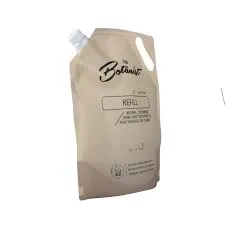- Afrikaans
- Albanian
- Amharic
- Arabic
- Armenian
- Azerbaijani
- Basque
- Belarusian
- Bengali
- Bosnian
- Bulgarian
- Catalan
- Cebuano
- chinese_simplified
- chinese_traditional
- Corsican
- Croatian
- Czech
- Danish
- Dutch
- English
- Esperanto
- Estonian
- Finnish
- French
- Frisian
- Galician
- Georgian
- German
- Greek
- Gujarati
- haitian_creole
- hausa
- hawaiian
- Hebrew
- Hindi
- Miao
- Hungarian
- Icelandic
- igbo
- Indonesian
- irish
- Italian
- Japanese
- Javanese
- Kannada
- kazakh
- Khmer
- Rwandese
- Korean
- Kurdish
- Kyrgyz
- Lao
- Latin
- Latvian
- Lithuanian
- Luxembourgish
- Macedonian
- Malgashi
- Malay
- Malayalam
- Maltese
- Maori
- Marathi
- Mongolian
- Myanmar
- Nepali
- Norwegian
- Norwegian
- Occitan
- Pashto
- Persian
- Polish
- Portuguese
- Punjabi
- Romanian
- Russian
- Samoan
- scottish-gaelic
- Serbian
- Sesotho
- Shona
- Sindhi
- Sinhala
- Slovak
- Slovenian
- Somali
- Spanish
- Sundanese
- Swahili
- Swedish
- Tagalog
- Tajik
- Tamil
- Tatar
- Telugu
- Thai
- Turkish
- Turkmen
- Ukrainian
- Urdu
- Uighur
- Uzbek
- Vietnamese
- Welsh
- Bantu
- Yiddish
- Yoruba
- Zulu
thca packaging
Understanding THCA Packaging Importance, Regulations, and Best Practices
In recent years, the cannabis industry has experienced unprecedented growth, leading to a surge in demand for various cannabis products, including those rich in tetrahydrocannabinolic acid (THCA). As a non-psychoactive precursor to THC, THCA has gained popularity for its potential health benefits. However, as the market continues to expand, so does the importance of effective and compliant packaging solutions for THCA products. This article delves into the significance of THCA packaging, the regulatory landscape, and best practices for manufacturers and retailers.
The Significance of THCA Packaging
Effective packaging plays a crucial role in the cannabis industry for several reasons. Firstly, quality packaging protects the product from environmental factors that could degrade its potency or quality. THCA, while stable, can convert to THC when exposed to heat or light, making it imperative to use packaging that mitigates these risks.
Additionally, packaging serves a vital marketing function. In a crowded marketplace, eye-catching and informative packaging can differentiate a product from its competitors. This not only attracts customers but also conveys important information about the product, such as its potency, ingredients, and usage recommendations.
Moreover, packaging is essential for ensuring consumer safety. Proper labeling provides consumers with necessary information regarding dosages, potential side effects, and legal disclaimers, thereby promoting responsible consumption.
Regulatory Landscape
Given the nature of cannabis products, regulatory compliance is critical when it comes to packaging THCA. Regulations can vary significantly between jurisdictions, so manufacturers must remain informed about the specific laws governing cannabis packaging in their areas. Common requirements may include child-resistant packaging, tamper-evident seals, and clear labeling that identifies the product as a cannabis item.
In many regions, packaging must also include information about the THCA content, directions for use, and any allergens the product may contain. Additionally, warnings about potential health risks and psychoactive effects are often required, even for non-psychoactive products like THCA.
Companies should also be aware of environmental regulations that encourage sustainable packaging practices. The move towards eco-friendly materials is gaining momentum, and brands that prioritize sustainable packaging may have a competitive edge.
thca packaging

Best Practices for THCA Packaging
To navigate the complexities of THCA packaging effectively, manufacturers and retailers should consider several best practices
1. Choose the Right Materials Packaging materials should be non-reactive and able to maintain product integrity. Glass, certain plastics, and other barriers that protect against light and moisture are ideal for preserving THCA content.
2. Ensure Child-Resistance Meeting child-resistant packaging standards is critical. This not only complies with regulations but also prioritizes the safety of young children who may inadvertently access cannabis products.
3. Promote Transparency Clear and concise labeling is essential. Include detailed information about the THCA levels, usage instructions, and any potential risks associated with the product. Transparency can build consumer trust and foster brand loyalty.
4. Incorporate Design Elements Thoughtfully Packaging design should be attractive yet functional. Consider incorporating branding elements that reflect the product's identity while ensuring the packaging remains easy to open and use.
5. Stay Informed The cannabis regulatory landscape is continually evolving. Staying updated on changes in packaging regulations and industry best practices is essential for compliance and maintaining a competitive edge.
Conclusion
As the demand for THCA products continues to rise, the importance of effective, compliant, and engaging packaging cannot be overstated. By prioritizing quality packaging solutions, manufacturers can not only protect their products but also enhance brand visibility, ensure consumer safety, and navigate the regulatory landscape effectively. In this rapidly evolving market, innovative and responsible packaging will play a pivotal role in the success of THCA products, establishing trust and fostering growth within the cannabis industry. As consumers become more discerning, those businesses that take packaging seriously will set themselves apart from the competition and thrive in this dynamic environment.













